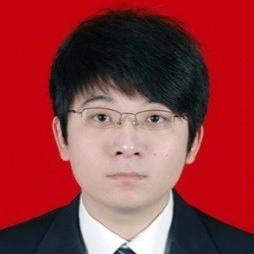Synthesis and Application of Catalytic Materials in Energy and Environment, 2nd Edition
A special issue of Catalysts (ISSN 2073-4344). This special issue belongs to the section "Environmental Catalysis".
Deadline for manuscript submissions: closed (29 February 2024) | Viewed by 4889
Special Issue Editors
Interests: oxide catalysts; electrocatalysis; environmental catalysis
Special Issues, Collections and Topics in MDPI journals
Interests: froth flotation; ore beneficiation; waste utilization; mineral materials; electrochemistry; environmental functional materials
Interests: hydrogen energy; heterogeneous catalysis; thermocatalysis; chemical reaction engineering
Special Issues, Collections and Topics in MDPI journals
Interests: CO2 conversion; plasma catalysis; gas separation; perovskites; H2 production; oxygen transporting membranes; waste materials recycling
Special Issues, Collections and Topics in MDPI journals
Special Issue Information
Dear Colleagues,
This issue is a continuation of the previous successful Special Issue “Synthesis and Application of Catalytic Materials in Energy and Environment”.
Catalytic materials have risen to prominence in many high-tech fields. These materials are not categorized according to their nature, bonding form, or processing methods, but rather according to the functions they may perform. The emergence of catalytic materials in the applications of Energy (energy storage, conversion, utilization) and Environment (detection, protection, rehabilitation) has received much more attention from both academic and industry scientists. Thus, it is necessary to provide a platform for the researchers and engineers for discussing the development of catalytic materials in energy and environment.
This Special Issue is devoted to ‘’Synthesis and Application of Catalytic Materials in Energy and Environment’’, including the synthesis, characterization, application, and mechanism analysis of the homogeneous and heterogeneous catalysts in energy and environment. All studies (experimental and theoretical) in the scope of this Special Issue, including original research and review articles, short communications, and perspective articles, are invited for submission.
Dr. Ning Han
Dr. Zhijie Chen
Dr. Bo Jiang
Dr. Guoxing Chen
Dr. Lingbao Xing
Guest Editors
Manuscript Submission Information
Manuscripts should be submitted online at www.mdpi.com by registering and logging in to this website. Once you are registered, click here to go to the submission form. Manuscripts can be submitted until the deadline. All submissions that pass pre-check are peer-reviewed. Accepted papers will be published continuously in the journal (as soon as accepted) and will be listed together on the special issue website. Research articles, review articles as well as short communications are invited. For planned papers, a title and short abstract (about 100 words) can be sent to the Editorial Office for announcement on this website.
Submitted manuscripts should not have been published previously, nor be under consideration for publication elsewhere (except conference proceedings papers). All manuscripts are thoroughly refereed through a single-blind peer-review process. A guide for authors and other relevant information for submission of manuscripts is available on the Instructions for Authors page. Catalysts is an international peer-reviewed open access monthly journal published by MDPI.
Please visit the Instructions for Authors page before submitting a manuscript. The Article Processing Charge (APC) for publication in this open access journal is 2700 CHF (Swiss Francs). Submitted papers should be well formatted and use good English. Authors may use MDPI's English editing service prior to publication or during author revisions.
Keywords
- energy storage
- energy conversion
- energy utilization
- environment rehabilitation
- electrocatalysis
- photocatalysis
- H2 production
- N2 fixation
- CO2 conversion
- homogeneous catalysis
- heterogeneous catalysis
- green synthesis









